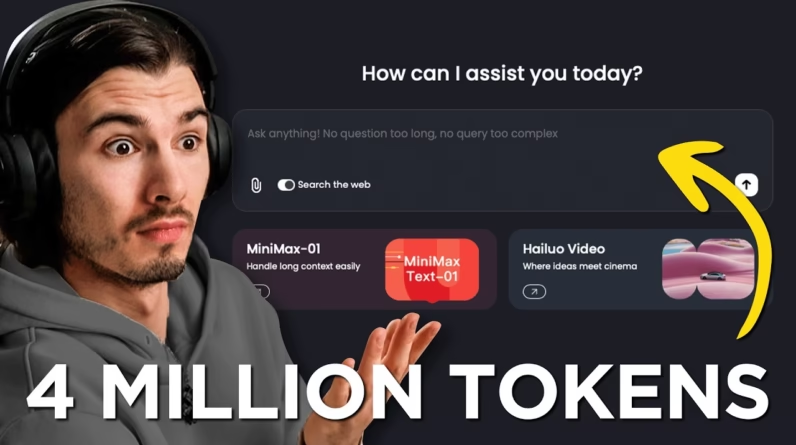
Building applications without needing extensive coding skills is more achievable than ever with the rise of no-code platforms. This article explores a simple approach to creating a ChatGPT plugin, guiding you through each step and using tools like ChatGPT and Replit. You’ll learn how to build a user-friendly currency converter plugin that interacts with real-time data, making it both practical and straightforward for beginners.
The focus is on empowering you to harness these tools effectively, even if you’re just starting your coding journey. From planning your project to debugging and celebrating your success, each section is designed to ensure you feel supported and confident in developing your own plugins. With exciting future content planned for more advanced functionalities, you’ll be encouraged to keep learning and expanding your skills in this dynamic space.
Table of Contents
Understanding No-Code Platforms

Definition of No-Code Platforms
No-code platforms are digital tools and frameworks designed to enable individuals to create software applications without needing to write traditional programming code. They use visual development interfaces where you can drag and drop components, configure settings, and set rules to accomplish tasks. Picture a canvas where you can design an app as easily as you would arrange furniture in a room; that’s what no-code platforms offer!
The Rise of No-Code Solutions
In recent years, there’s been a significant surge in the popularity of no-code solutions. This rise can be attributed to several factors: the growing demand for digital products, the global shortage of skilled developers, and the desire for businesses and individuals to act quickly in an ever-evolving digital landscape. As organizations realize that not all teams are composed of tech experts, the appeal of Empowering Non-Developers to create their own solutions becomes increasingly clear.
How No-Code Platforms Work
No-code platforms work by providing a set of pre-built modules and visual workflows that you can customize according to your needs. Instead of writing lines of code, you access a dashboard where you can select functionalities, design user interfaces, and set data connections visually. This allows you to focus on the logic and design of your application without getting bogged down by technicalities.
Benefits of Using No-Code Platforms
Empowering Non-Developers
One of the most exciting benefits of no-code platforms is how they empower non-developers. Imagine being able to bring your ideas to life even if you lack programming knowledge! By simplifying the development process, more people can participate in app creation, leading to greater innovation and creativity in projects that may have otherwise been left untouched.
Speed and Efficiency in Development
Utilizing a no-code platform significantly accelerates the development process. Traditional coding can take weeks or even months to complete a project, whereas no-code solutions can often enable you to build an app in just days or hours. This speed is especially advantageous for businesses that need to react quickly to market changes or internal demands.
Cost-Effectiveness Compared to Traditional Development
Building software can be expensive, especially when hiring skilled developers. No-code platforms often come with lower upfront costs and subscription models that can fit within various budget ranges. By using these platforms, you’re not only saving on development expenses but also minimizing the costs associated with project management and maintenance.
Top No-Code Platforms of 2024
Overview of Major Platforms
As the no-code movement gains traction, numerous platforms have emerged, each with unique strengths and specializations. From building websites to complex applications, there’s a variety of options available for any type of user and project.
Webflow: Key Features and Use Cases
Webflow is renowned for its ability to create highly responsive websites without code. It combines design, CMS, and ecommerce capabilities, making it an excellent choice for businesses wanting to showcase their products and services. With its powerful visual editor and intuitive interface, you can build complex layouts that look professionally designed.
Bubble: Flexibility for Complex Applications
Bubble is another leading no-code platform; it’s known for its versatility in building web applications. From simple prototypes to fully-fledged platforms, Bubble provides deep customization and logic-building capabilities. You can create interactions and workflows that resemble traditional coding without writing a single line.
Adalo: Simplifying Mobile App Development
Adalo specializes in mobile application development, allowing you to design apps for Android and iOS using a drag-and-drop interface. It offers components like authentication, notifications, and databases, making it a fantastic choice for those aiming to launch their mobile apps quickly and efficiently.
Glide: Creating Apps from Google Sheets
Glide is perfect for those who want to turn spreadsheets into functional mobile apps. By using Google Sheets as a backend, Glide simplifies the app creation process while enabling real-time data updates. This is excellent for personal projects, internal tools, or any scenario where you have existing data you want to leverage.
How to Choose the Right No-Code Platform for Your Project
Assessing Project Requirements
When selecting a no-code platform, the first step is to evaluate your project’s requirements. Consider the type of application you want to create and the features you need. Some platforms may excel in web development while others are better suited for mobile or specific functionalities.
Budget Considerations
Different no-code platforms come with varied pricing models, from free tiers to monthly subscriptions. Determine your budget and find a platform that offers the right features within your price range. Always consider the long-term costs, especially if you plan to scale your project.
Ease of Use and Learning Curve
While no-code platforms are generally user-friendly, they all have unique interfaces and learning curves. Choose a platform that matches your comfort level with technology and design. Many platforms offer tutorials and communities where you can quickly learn the ropes.
Integration Capabilities with Existing Tools
If you already use specific tools or software in your workflow, check if your chosen no-code platform integrates easily with those tools. Seamless integration can make your application more powerful and save you time when managing data across various systems.
Getting Started with No-Code Development
Narrowing Down Your Project Idea
Before diving into no-code platforms, take time to refine your project idea. What do you want your application to achieve? Defining clear objectives will simplify the building process and help you focus on the functionality that matters most.
Exploring No-Code Templates
Many no-code platforms offer pre-designed templates that make it easier to get started. These templates can provide inspiration and a scaffold for your project, allowing you to customize elements as needed rather than starting from scratch.
Setting Up Your First No-Code Project
Once you’ve settled on your project idea and template, it’s time to dive into the platform. Follow the platform’s onboarding instructions, familiarize yourself with the interface, and begin building. Remember to take it step by step, and don’t be afraid to experiment!
Designing Applications with No-Code Tools
User Interface Design Principles
Creating an intuitive user interface is crucial for your app’s success. Simple navigation, accessibility, and engaging design play essential roles in user experience. Focus on these principles as you build your application within the no-code platform.
Utilizing Pre-Built Components and Templates
Most no-code platforms come equipped with a library of components like buttons, images, input fields, and more. Make use of these pre-built features to save time and create a visually appealing app. Customizing these components can help you achieve your unique vision.
Customizing Your App’s Appearance
Don’t hesitate to modify templates or components to reflect your brand or personal style. Adjusting colors, fonts, and layouts allows you to create an app that stands out while still being user-friendly.
Extending No-Code Platforms with Low-Code Solutions
When to Use Low-Code Options
While no-code platforms are powerful, sometimes you might hit limitations that require custom code. Low-code solutions allow you to write minimal code to enhance your application’s functionality while still leveraging the benefits of visual development.
Integrating Custom Code for Advanced Features
With many no-code platforms, you can add custom code snippets for specific functionalities. This is particularly useful when you need features that the platform doesn’t support out of the box. Remember, it’s about finding a balance between no-code and low-code approaches.
Best Practices for Low-Code Development
When using low-code to enhance your no-code application, ensure that your code is clean and well-documented. This will help you or anyone you collaborate with in the future understand and maintain the application efficiently.
Common Use Cases for No-Code Platforms
Building Simple Websites
Creating simple websites has never been easier with no-code platforms. Whether you want a personal blog or a portfolio site, you can quickly design and launch a site without needing to understand web development deeply.
Creating Mobile Applications
With platforms like Adalo and Glide, you can easily create mobile applications tailored to your needs. Whether for business or personal projects, these tools allow you to enter the mobile app market with a minimum of hassle.
Automating Business Processes
Many businesses are harnessing the power of no-code platforms to automate repetitive tasks and workflows. This not only saves time but also reduces human error, allowing staff to focus on more strategic activities.
Developing E-commerce Solutions
Building an e-commerce platform is now accessible to anyone with a product to sell. No-code platforms empower entrepreneurs to create simple online stores without extensive technical knowledge, enabling them to reach customers worldwide.
Challenges and Limitations of No-Code Platforms
Understanding the Learning Curve
While no-code platforms are user-friendly, there is still a learning curve associated with using new software. Take time to familiarize yourself with the features and functions of any platform you choose to ensure a smoother development process.
Scalability Concerns
Many no-code platforms offer easy-to-use interfaces, but as your application scales, you may run into limitations regarding performance and customization. It’s essential to consider whether the platform can grow with your needs.
Customization Limitations
No-code platforms provide a range of design options, but they can also have restrictive parameters. If your project requires unique features or designs, you might find yourself constrained. Knowing when to pivot to low-code options is vital.
Conclusion
Recap of the No-Code Revolution
The no-code revolution is transforming how businesses and individuals approach software development, enabling greater accessibility and encouraging innovation. As more people embrace these tools, we can expect to see a greater proliferation of creative ideas and solutions.
Encouragement to Explore No-Code Options
If you have an idea you’ve been waiting to develop, now is the perfect time to explore no-code platforms. With a wealth of resources available for learning, there’s nothing stopping you from becoming an app creator.
Final Thoughts on Empowering Non-Developers
No-code platforms are paving the way for a future where anyone can bring their ideas to life. By streamlining the development process, you can focus on what truly matters: creating solutions that serve you and others. Embrace the power of no-code and start your journey today!







